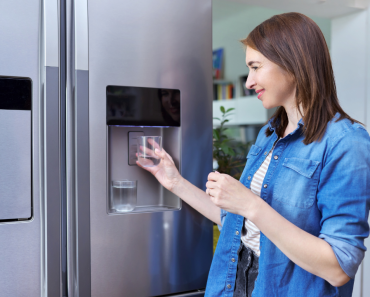Whether you’re spending the winter at home or going to a warmer cottage or cabin, there are simple things you can do to maintain your water filter system from freezing.
Before the cold weather arrives, inspect the installation area of your water filter system.
The winter is a hard season, and the cold might damage your water filter system if it isn’t kept properly. Broken windows, drafty holes, and missing insulation are only a few of the issues that may expose your water filter system to sub-freezing temperatures and possibly harm it. If you detect any of these problems in your house, act immediately to correct them. Otherwise, you run the danger of not having a viable working water filter system when the new season begins – unless you’re fine with spending potentially large sums to repair or replace it.
Add more insulation.
Water filters may get rather chilly in the winter, so bundle them up with insulation and plumbing sleeves. Insulation materials such as fibreglass sleeves and foam rubber can be found at local hardware or home improvement shops that can cover your whole water filter. Many also include additional pieces to safeguard the pipes connecting to and from your water treatment system. To decrease the danger of freeze damage, you could build an insulated box around the water filter or use an old ice chest with a shop light inside.
Whatever technique you pick, be sure to cut the insulation materials to suit the filter system and adjacent plumbing. To assist decrease the chances of your pipes and filter system freezing, secure the insulation elements in place using zip ties, wire, or tape.
Another way to keep the heat in your house is by circulating it. That means closing the garage door, caulking any cracks and holes throughout the home, fixing the roof, and doing other things to ensure that warm air stays in and cold air goes out. It’s like this so that your water filter system isn’t exposed to extreme cold.
Leave the heat on.
Whether you’re at home during the winter or not, keeping a constant, warmer temperature in your house to avoid your water filter system and plumbing from freezing is critical. When your thermostat is set to no lower than 55°F, leaving your property for an extended time with it off puts your water filter system at risk of harm due to the cold. As a result, make sure your thermostat is set to no less than 55°F when you’re away. If you’re using a space heater, make sure it’s an energy-efficient model with an auto-defrost function. (A thermostatically controlled space heater may be a useful choice here.) If you’re concerned about heat loss due to power outages, consider buying safe propane or kerosene space heater to keep the filter system warm on those cold nights when storm fronts pass through and knock trees over electricity lines. Remember that an unvented combustion heater should not be used in inhabited areas.
Remove the filter and drain it.
In cold weather, frozen water can harm your water treatment system. To avoid this, if you don’t intend to use the filter in the winter, drain all of the water from it. First, turn off the water supply to prevent any more water from entering the system. Then open all of the faucets in your home and allow any remaining water to flow away. You may also use a siphoning device to take out any water remaining in the filter system, or connect a compressor to it and blow all of the water out of the pipes and the filter itself. If your water treatment system includes any filter housings, remove them, unscrew the drain plug at the bottom, empty them, and replace them with no filters inside.
Allow a slow drip from the faucet.
When the water in a residential water filter system is moving constantly, it is more difficult for it to freeze. If you’ll be gone for a few days, consider leaving the kitchen faucet running on all systems. A steady drip will assist to release pressure as water passes through the system while also assisting in the prevention of damage to its internal components. Also, make careful to place a container under the tap to catch all of the water. This water may be used for a variety of purposes once you return home. As easy as it sounds, this method can save you time and money by preventing you from dealing with a clogged water filter system and related costs.
Place your reverse osmosis water filter system in a warm location.
When relocated to a warmer environment, reverse osmosis (RO) water filtering systems are safer. There is no safe method to winterize an RO filter since it is impossible to properly freeze it. The RO membrane – one of the system’s most costly components – can become dry and cracked after freezing if the system freezes. It is not only expensive to replace a broken RO membrane, but it also allows water to flow through it without being filtered. As a result, we advise disconnecting the RO unit, draining it (following these steps), and storing it in a warm location for the winter.
Off the filter from the faucet.
In certain situations, shutting down the water filter system, draining it, and possibly relocating it to a warmer location may be the best option to keep it safe throughout the winter. This is mostly true for remote cabins or vacation houses that are left vacant for weeks or months on end.
